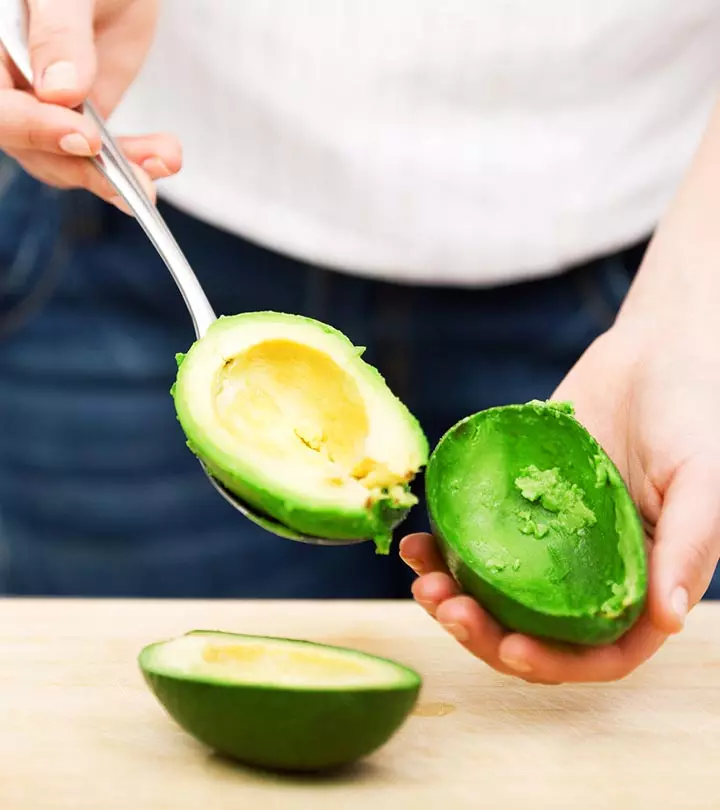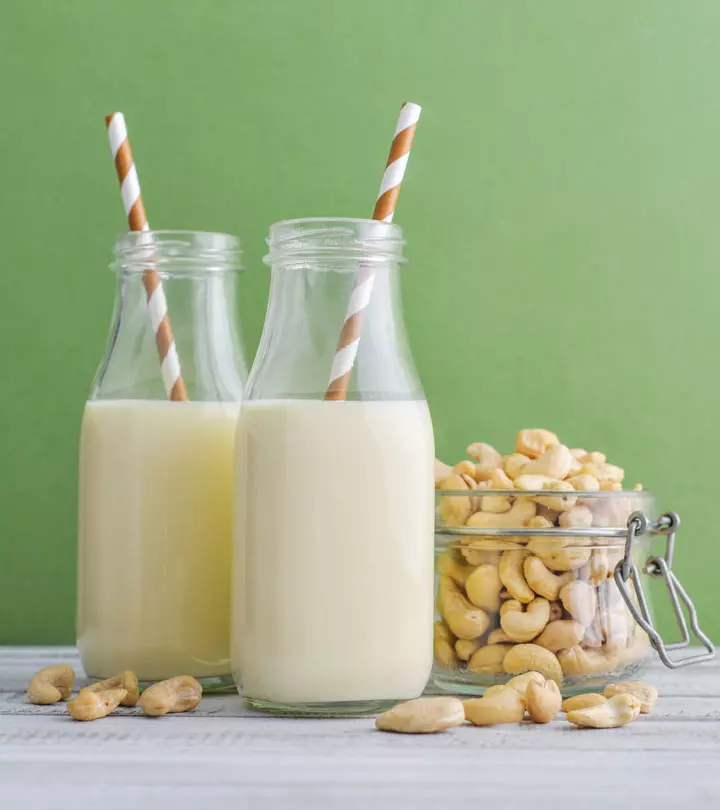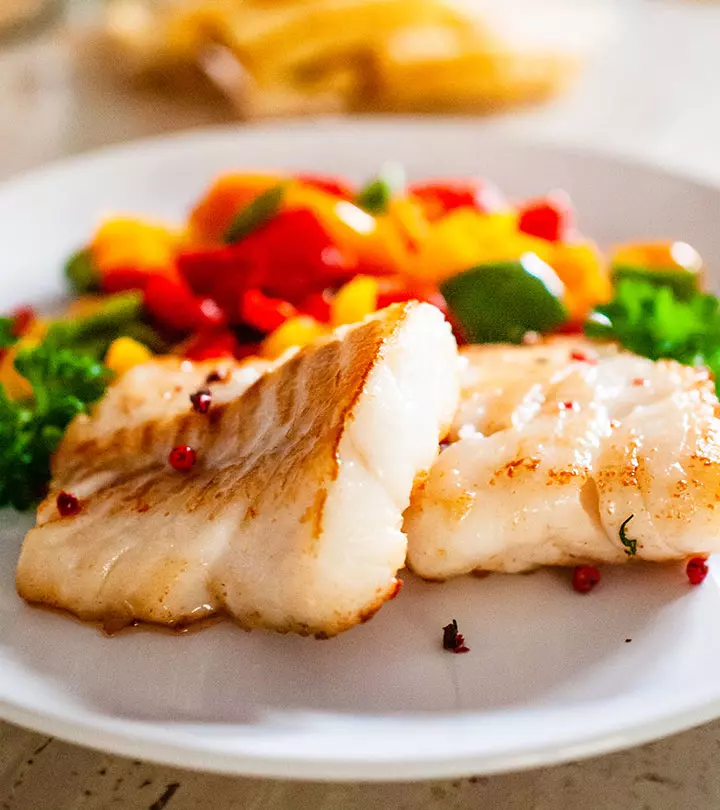Bone Broth Diet: A Comprehensive Guide For Weight Loss And Health Benefits
Decoding the science behind a modern day weight loss strategy.

Image: ShutterStock
Bone broth is found almost in every cuisine around the world due to its potential health benefits. However, the “Bone Broth Diet” is a rather modern concept that has gained popularity in recent years. Dr. Kellyann Petrucci, a naturopathic physician and author, popularized it through her book Dr. Kellyann’s Bone Broth Diet in 2015, where she detailed the diet’s principles, outlined its potential health benefits, and provided guidelines for it.
Intake of regular bone broth is often considered to boost weight loss. But can the bone broth diet, which blends principles of intermittent fastingi An eating pattern that alternates between short periods of eating and prolonged periods of fasting for metabolic benefits. and paleo-style eating, achieve a similar goal?
In this article, we discuss everything you need to know about the bone broth diet, including its possible benefits, the way it works, and a meal plan that may suit your needs. Continue reading.
 At A Glance: Bone Broth Diet
At A Glance: Bone Broth Diet- Principle: The use of bone broth that is high in collagen, amino acids, and minerals with a selection of other nutrient-dense, whole and unprocessed foods.
- Purpose: To promote weight loss, improve gut and joint health, reduce inflammation, and offer essential nutrients for overall health.
- Who It Is For: Individuals on their weight loss journey or those with digestive issues such as leaky gut syndromei A condition where undigested foods and toxins ‘leak’ into the bloodstream through the damaged intestinal lining and cause digestive problems. .
- Duration: Both short-term and long-term.
- Who Should Avoid: Individuals with certain dietary restrictions, with a history of eating disorders, specific medical conditions such as kidney issues, allergies, or sensitivities, and pregnant or nursing women.
- Cons: May cause nutritional deficiencies and digestive discomfort, can be expensive for some, and could be time-consuming.
In This Article
What Is The Bone Broth Diet?

The bone broth diet is a special dietary plan that focuses on regular intake of bone broth along with intermittent fasting and paleo-style eating. It includes whole foods like lean meats, fish, poultry, eggs, vegetables, fruits, nuts, and seeds. It excludes grains, legumes, dairy, refined sugars, and processed foods to curb weight gain and boost overall metabolic function.
The diet plan involves bone broth intake combined with intermittent fasting for two days of the week and paleo-style meals on the other days. Bone broth can be a source of essential nutrients like collagen and amino acids. However, one needs to approach this diet with caution and seek guidance from a healthcare professional due to its restrictive nature.
Understanding how this diet works is the first step to evaluate its benefits on your health. Learn more in the next section.
Key Takeaways
- The bone broth diet emphasizes the consumption of bone broth that is rich in collagen, amino acids, and minerals to support skin health, joint function, and gut integrity.
- The diet incorporates intermittent fasting and paleo-based meals for effective weight management and internal detoxification.
- The potential benefits of this diet include improved digestion, reduced inflammation, and weight loss.
- Individuals with certain dietary restrictions, allergies, or medical conditions must consult a healthcare professional before adopting this diet.
How Does The Bone Broth Diet Work?
Intermittent Fasting: Participants fast for two non-consecutive days each week, where they consume bone broth almost exclusively. This fasting period allows the digestive system to rest. It also promotes fat loss by putting the body in a calorie deficit.
Paleo-Based Nutrition: Participants follow a paleo-style diet on non-fasting days. They consume whole foods like lean meats, fish, vegetables, fruits, nuts, and seeds, while excluding grains, dairy, legumes, refined sugars, and processed foods. This approach promotes better digestion and overall health.
Bone Broth Consumption: It is consumed during fasting days and optionally as a supplement on the other days. Bone broth benefits gut health, boosts skin elasticity, and aids joint function. The gelatin in bone broth is believed to heal the gut lining and reduce intestinal inflammation (1). However, more research is needed to determine its efficacy in humans.
Weight Loss: The combination of fasting and an intake of a paleo-based diet often results in a calorie deficit and leads to weight loss. Also, the low calorie content of bone broth makes maintaining this deficit much easier.
Detoxification: The diet eliminates potential irritants such as processed foods and dairy and may enhance the body’s natural detoxification processes as a result.
Bone broth is highly nutritious and proponents of this diet claim that it is highly beneficial for weight loss. The following section explains how it may help you shed a few pounds.
Bone Broth Diet For Weight Loss
The bone broth diet may aid weight loss due to its low-calorie content and the potential to promote satiety. It can help reduce overall calorie intake when incorporated into a balanced diet. It also offers essential nutrients like amino acids and collagen that strengthen the gut lining and improve digestion and nutrient absorption. The collagen also may enhance joint and skin health and boost overall metabolism (2), (3).
 Did You Know?
Did You Know?When consumed as a replacement for high-calorie snacks or meal accompaniments, bone broth can help create a calorie deficit that is essential for weight loss. However, it is crucial to approach bone broth as a part of a balanced diet and not rely solely on it for weight loss. Effective weight management depends on a combination of dietary choices, regular exercise, and holistic wellness practices.
Many people have reported benefits from the bone broth diet. While scientific evidence for the diet itself is limited, the individual ingredients used may offer a few benefits for those following the diet. Learn more in the next section.
Other Benefits Of The Bone Broth Diet
- May Improve Gut Health: Bone broth is rich in gelatin and amino acids that may help repair the intestinal lining and reduce gut inflammation (5). It may be highly beneficial for individuals with digestive issues like leaky gut or irritable bowel syndrome (IBS).
- May Promote Joint Health: Bone broth’s collagen may help maintain and repair joint tissues as well as reduce joint pain. Studies suggest that collagen provides structure and strength to your bones and connective tissues (6).
- May Improve Skin Health: Research suggests that collagen-based supplements may improve skin hydration and elasticity and help reduce wrinkles (7). The collagen in bone broth may have a similar role to play.
- May Enhance Metabolism: When prepared with vegetables and herbs, bone broth can be a source of essential nutrients, like vitamins, minerals, and antioxidants. Increased nutrient intake can enhance your metabolism (8).
Hence, consult a healthcare professional or a registered dietitian to determine how well it may suit your health goals. In the following section, we have elaborated a 7-day meal plan that tells you how you can incorporate the bone broth diet into your routine.
The 7-Day Bone Broth Diet Plan

Day 1: Transition Day
- Breakfast: A cup of warm bone broth and a serving of scrambled eggs (made with 2 eggs)
- Lunch: A salad with some leafy greens, grilled chicken (typically 4 oz.), and 1 to 2 tablespoons of vinaigrette dressingi A salad dressing made by combining oil, vinegar, or citrus juice with seasonings to flavor salads and other dishes.
- Snack: Another cup of bone broth in the afternoon
- Dinner: Baked salmon (typically 4 oz.) with roasted asparagus, and a cup of bone broth
Day 2: Transition Day
- Breakfast: A cup of Greek yogurt with 1 tablespoon of honey and ½ cup of berries, and a cup of bone broth
- Lunch: A bowl of bone broth-based vegetable soup with added beans or lentils
- Snack: A handful of nuts and a cup of green tea
- Dinner: Stir-fried tofu (typically 4 oz.) with some bok choy and ½ cup of cooked brown rice, and a cup of bone broth
Day 3: Fasting Day
- Breakfast: A cup of herbal tea or black coffee (no solid food)
- Dinner:A cup of bone broth or a light vegetable soup
You can also have a cup of bone broth each in the mid-morning, lunch, and in the evening as a snack.
Day 4: Transition Day
- Breakfast: ½cup of whole-grain oatmeal (dry measure) with 1 medium sliced banana and a sprinkle of nuts, and a cup of bone broth
- Lunch: Turkey (typically 4 oz.) and ½ avocado in a wrapwith a side salad, and a cup of bone broth
- Snack:1 cup of sliced cucumbers with 2 tablespoons of hummus
- Dinner: 6 to 8 medium-sized grilled shrimp with ½ cup of cooked quinoa and some steamed green beans, and a cup of bone broth
Day 5: Transition Day
- Breakfast: 2 scrambled eggs with ½ cup of mushrooms, and a cup of bone broth
- Lunch: 1 to 2 cups of lentil soup with a side of mixed greens, and a cup of bone broth
- Snack: A piece of fruit and a handful of almonds
- Dinner: 2 small baked chicken thighs with some roasted Brussels sprouts, and a cup of bone broth
Day 6: Fasting Day
- Breakfast: A cup of herbal tea or black coffee (no solid food)
- Dinner: A cup of bone broth or a light vegetable soup
You can also have a cup of bone broth each in the mid-morning, lunch, and in the evening as a snack
Day 7: Transition Day
- Breakfast: Smoothie with 1 cup of spinach, 1 medium banana, 1 cup of almond milk and a scoop of protein powder, and a cup of bone broth
- Lunch: A salad made with ½ cup of cooked quinoa and ½ cup of black beans mixed with some veggies, 1 to 2 tablespoons of citrus vinaigrette, and a cup of bone broth
- Snack:A handful of mixed berries
- Dinner: Grilled salmon (typically 4 oz.) with 1 cup of sautéed kale and ½ cup of cooked quinoa, and a cup of bone broth
Drink plenty of water or herbal tea throughout the day to stay hydrated. You also may consume bone broth as a warm and soothing drink between meals, based on your preferences and nutritional needs.
The bone broth diet can be quite restrictive. Hence, you may follow it for short periods and gradually transition back to a balanced diet to avoid nutrient deficiencies.
Consult your healthcare provider or dietitian for personalized guidance before starting the diet. Also, how much bone broth you drink per day can also determine the effectiveness of this diet. Learn more in the next section.
How Much Bone Broth Should I Drink Per Day?

How much bone broth you need to drink per day depends on your preferences and needs. A typical serving is about 1 cup (8 ounces), whether you sip it as a warm beverage or use it as a base for soups and recipes. While some people incorporate it into their daily routine, others may consume it a few times a week. Listen to your body and adjust the intake of bone broth accordingly.
Start with smaller amounts and gradually increase your intake, based on your taste, digestive comfort, and dietary goals. Bone broth should always complement a balanced diet. Staying adequately hydrated is also crucial.
There are many creative ways you can incorporate bone broth into your weight loss diet. Check out the following recipes for some inspiration.
Bone Broth Diet Recipes For Weight Loss
1. Chicken And Vegetable Bone Broth Soup

Calories per serving: 150 to 200, approximately
Serves: 4
Prep Time: 15 minutes
Cooking Time: 25 minutes
Ingredients
- 4 cups of chicken bone broth
- 2 boneless, skinless chicken breasts, diced
- 1 cup of diced carrots
- 1 cup of diced celery
- 1 cup of diced zucchini
- 1 cup of chopped spinach or kale
- 1 small onion, chopped
- 2 cloves of garlic, minced
- 1 teaspoon of olive oil
- Salt and pepper to taste
- Herbs and spices such as thyme, rosemary, or bay leaves (optional)
How To Prepare
- Heat olive oil in a large pot over medium heat. Add the chopped onion and garlic and sauté until fragrant.
- Add the diced carrots, celery, and zucchini to the pot. Cook for a few minutes until they begin to soften.
- Pour the chicken bone broth and bring the mixture to a simmer. You may add herbs and spices for extra flavor.
- Add the diced chicken breasts to the pot and simmer for about 15 to 20 minutes until the chicken is cooked through.
- Stir in the chopped spinach or kale and simmer for an additional 5 minutes.
- Season with salt and pepper to taste.
- Serve hot.
2. Bone Broth Breakfast Smoothie

Calories per serving: 250 to 300, approximately
Serves: 1
Prep Time: 5 minutes
Cooking Time: N/A
Ingredients
- 1 cup of chicken bone broth
- ½ cup of plain Greek yogurt
- ½ cup of mixed berries (blueberries, strawberries, raspberries)
- 1 small banana
- 1 tablespoon of honey (optional)
- ½ teaspoon of cinnamon
- Ice cubes (optional)
How To Prepare
- Add bone broth, Greek yogurt, mixed berries, banana, honey (if using), and cinnamon to a blender.
- Blend all the ingredients until smooth and well combined.
- Taste and adjust the sweetness if necessary by adding more honey.
- Pour the bone broth breakfast smoothie into a glass and enjoy.
3. Bone Broth Protein Shake

Calories per serving: 210, approximately
Serves: 1
Prep Time: 5 minutes
Cooking Time: N/A
Ingredients
- 1 cup of bone broth (chicken or beef), warm or cold, as you prefer
- ½ medium banana
- 1 tablespoon almond butter
- 1/4 teaspoon cinnamon
- 1 tablespoon chia seeds
- 1/4 cup of almond milk (unsweetened)
How To Prepare
- Combine bone broth, banana, almond butter, cinnamon, chia seeds, and almond milk in a blender.
- Blend on high until the mixture is smooth.
- Pour into a glass and enjoy immediately.
- Gently heat the blended shake in a saucepan for a few minutes if you prefer it warmer.
4. Bone Broth And Vegetable Stir-Fry

Calories per serving: 200, approximately
Serves: 2
Prep Time: 15 minutes
Cooking Time: 15 minutes
Ingredients
- 2 cups of beef bone broth
- 1 cup of broccoli florets
- 1 cup of bell peppers, sliced
- 1 cup of sugar snap peas
- 1 cup of sliced mushrooms
- 1 small onion, thinly sliced
- 2 cloves of garlic, minced
- 1 tablespoon of low-sodium soy sauce or tamari
- 1 teaspoon of olive oil
- Salt and pepper to taste
- Red pepper flakes for heat (optional)
- Sesame seeds for garnish (optional)
How To Prepare
- Heat olive oil in a large skillet or wok over medium-high heat.
- Add minced garlic and sliced onion. Sauté for 1 to 2 minutes until fragrant.
- Add broccoli florets, bell peppers, sugar snap peas, and sliced mushrooms to the skillet. Stir-fry for about 5 to 7 minutes, until the vegetables are crisp-tender.
- Pour in the beef bone broth and soy sauce (or tamarii A gluten-free Japanese soy sauce that has a richer flavor than regular soy sauce and is often used as a condiment. ). You may add red pepper flakes for some heat. Stir and cook for an additional 3 to 5 minutes.
- Season the stir-fry with salt and pepper to taste.
- Continue to cook for a few more minutes if the broth needs to reduce and thicken slightly.
- Divide the stir-fry into two serving bowls.
- Garnish with sesame seeds if desired.
 Did You Know?
Did You Know?These recipes offer a simple way to incorporate bone broth into your routine. But can you consume these at any time during the day? Or is there a specific time to take bone broth to maximize its benefits?
Best Time To Drink Bone Broth For Weight Loss

The best time to drink bone broth for weight loss largely depends on your personal preferences and daily routine. The general recommendation is to either drink it first thing in the morning on an empty stomach or before bedtime.
While consuming bone broth in the morning induces satiety and may reduce caloric intake throughout the day, having it before bedtime helps curb late-night cravings.
Some people also benefit from consuming a cup of bone broth as a warm, low-calorie snack between meals. This helps reduce appetite.
How Is Bone Broth Different From Regular Broth Or Stock?
Bone broth, regular broth, and stock are distinct culinary preparations. Bone broth is a rich, gelatinous liquid with a deep flavor made by simmering bones from beef, chicken, pork, or fish with vegetables, herbs, and spices for 12 to 24 hours or longer.
Regular broth is made by simmering meat (sometimes with vegetables, herbs, and spices) for 1 to 2 hours to produce a lighter, clearer liquid, which is then seasoned and used to prepare soups, gravies, and sauces.
 Did You Know?
Did You Know?On the other hand, stock is a less seasoned and neutral base prepared for a wide range of recipes by mixing bones, meat, and vegetables and simmering them with aromatic herbs and spices for 3 to 4 hours or longer.
The main distinctions lie in the ingredients, preparation time, and the depth of flavor and texture they bring to the dishes. While bone broth is known for its health benefits and gelatinous texture, regular broth and stock are primarily used for flavoring soups and sauces.
Infographic: Trivia About Bone Broth
Bone broth is not just a culinary staple. Many consider it a potent potion for improving digestion and enhancing metabolism. The bone broth diet, inspired by ancient culinary practices, helps you incorporate highly nutritious bone broth and whole foods into your daily meals for numerous health benefits. In the infographic below, we share some interesting trivia about this popular wellness drink. Read on!

Illustration: StyleCraze Design Team
The bone broth diet fuses ancient culinary traditions with contemporary nutritional practices to create a simple and holistic approach to healthy eating. With numerous promising benefits, this diet provides essential nutrients such as collageni Often used in supplements, it is the primary structural protein found in the skin, bones, and connective tissues. and minerals that promote gut health and joint vitality. While it’s not a one-size-fits-all solution, incorporating bone broth into your daily diet can be a tasty and nutritious step toward a healthier lifestyle. However, it’s crucial to approach the diet with balance and moderation. As with all dietary changes, consulting a nutrition expert can help you gain personalized guidance based on your diet preferences and health requirements.
Frequently Asked Questions
What are some common mistakes to avoid while on the Bone Broth Diet?
Common mistakes while you are on the Bone Broth Diet include not drinking enough broth, overeating on non-fasting days, and neglecting hydration or nutrient balance. Additionally, relying on low-quality broths or skipping vegetables can reduce the diet’s effectiveness and health benefits.
What type of bone broth is best for weight loss?
Several types of bone broth can aid in weight loss. Many commercial brands offer pre-packaged bone broths in liquid or powdered forms that are made from different animal bones with various seasonings or additives. However, homemade bone broth offers the most flexibility and control over the ingredients and flavor. For weight loss, consider using bone broth made from lean meats or poultry as they have a lower fat content.
Will I be hungry during the bone broth diet?
You might initially feel hungry, especially on the fasting days. But this should decrease once you get accustomed to the intermittent fasting and bone broth. Stay hydrated and eat a balanced diet on non-fasting days and pay attention to your body’s signals. Visit a healthcare professional if hunger persists or any symptoms appear.
Are there any side effects of consuming bone broth?
While moderate intake of bone broth is safe, practice caution. It is high in sodium and may not be suitable for those with high blood pressure or who are on low-sodium diets. Excessive fatty broth can cause digestive issues. Some may also experience headaches or indigestion. Also, those with gout or kidney problems must be mindful of the purines in bone broth.
Does bone broth taste good?
This depends on the individual. Bone broth’s taste can be rich and savory, especially with herbs and spices. The type of bones used, the simmering time, and other added ingredients also deeply influence the flavor. If you are new to bone broth, try various recipes or brands to find what you like.
Illustration: Bone Broth Diet: Is It Good For Weight Loss?

Image: Stable Diffusion/StyleCraze Design Team
The following video explains the Bone broth is rich in collagen and helps treat digestive issues while enhancing gut integrity when consumed as part of a balanced diet. Check out a gut-healing bone broth recipe in the video below.
of the AIP diet in managing Hashimoto’s disease. But here’s a catch – it is not for everyone. Watch the following video to learn more.
References
Articles on StyleCraze are backed by verified information from peer-reviewed and academic research papers, reputed organizations, research institutions, and medical associations to ensure accuracy and relevance. Read our editorial policy to learn more.
- Analysis of the Anti-Inflammatory Capacity of Bone Broth in a Murine Model of Ulcerative Colitis
Medicina, MDPI
https://www.ncbi.nlm.nih.gov/pmc/articles/PMC8618064/ - Oral Intake of Low-Molecular-Weight Collagen Peptide Improves Hydration, Elasticity, and Wrinkling in Human Skin: A Randomized, Double-Blind, Placebo-Controlled Study Nutrients, MDPI
https://www.mdpi.com/2072-6643/10/7/826 - A Review of the Effects of Collagen Treatment in Clinical Studies Polymers, MDPI
https://www.ncbi.nlm.nih.gov/pmc/articles/PMC8620403/ - Physicochemical and Biological Properties of Gelatin Extracted from Marine Snail Rapana venosa Marine Drugs
https://www.ncbi.nlm.nih.gov/pmc/articles/PMC6835507/ - The Anti-Inflammatory Effect of Bovine Bone-Gelatin-Derived Peptides in LPS-Induced RAW264.7 Macrophages Cells and Dextran Sulfate Sodium-Induced C57BL/6 Mice Nutrients, MDPI
https://www.ncbi.nlm.nih.gov/pmc/articles/PMC9003490/ - Collagen Supplementation for Joint Health: The Link between Composition and Scientific Knowledge Nutrients, MDPI
https://www.ncbi.nlm.nih.gov/pmc/articles/PMC10058045/ - A Collagen Supplement Improves Skin Hydration, Elasticity, Roughness, and Density: Results of a Randomized, Placebo-Controlled, Blind Study
Nutrients, MDPI
https://www.ncbi.nlm.nih.gov/pmc/articles/PMC6835901/ - Importance of Nutrients and Nutrient Metabolism on Human Health Yale Journal of Biology and Medicine
https://www.ncbi.nlm.nih.gov/pmc/articles/PMC6020734/
Read full bio of Samantha Blanton
Read full bio of Sindhu Koganti
Read full bio of Ravi Teja Tadimalla
Read full bio of Payal Karnik



























Community Experiences
Join the conversation and become a part of our empowering community! Share your stories, experiences, and insights to connect with other beauty, lifestyle, and health enthusiasts.